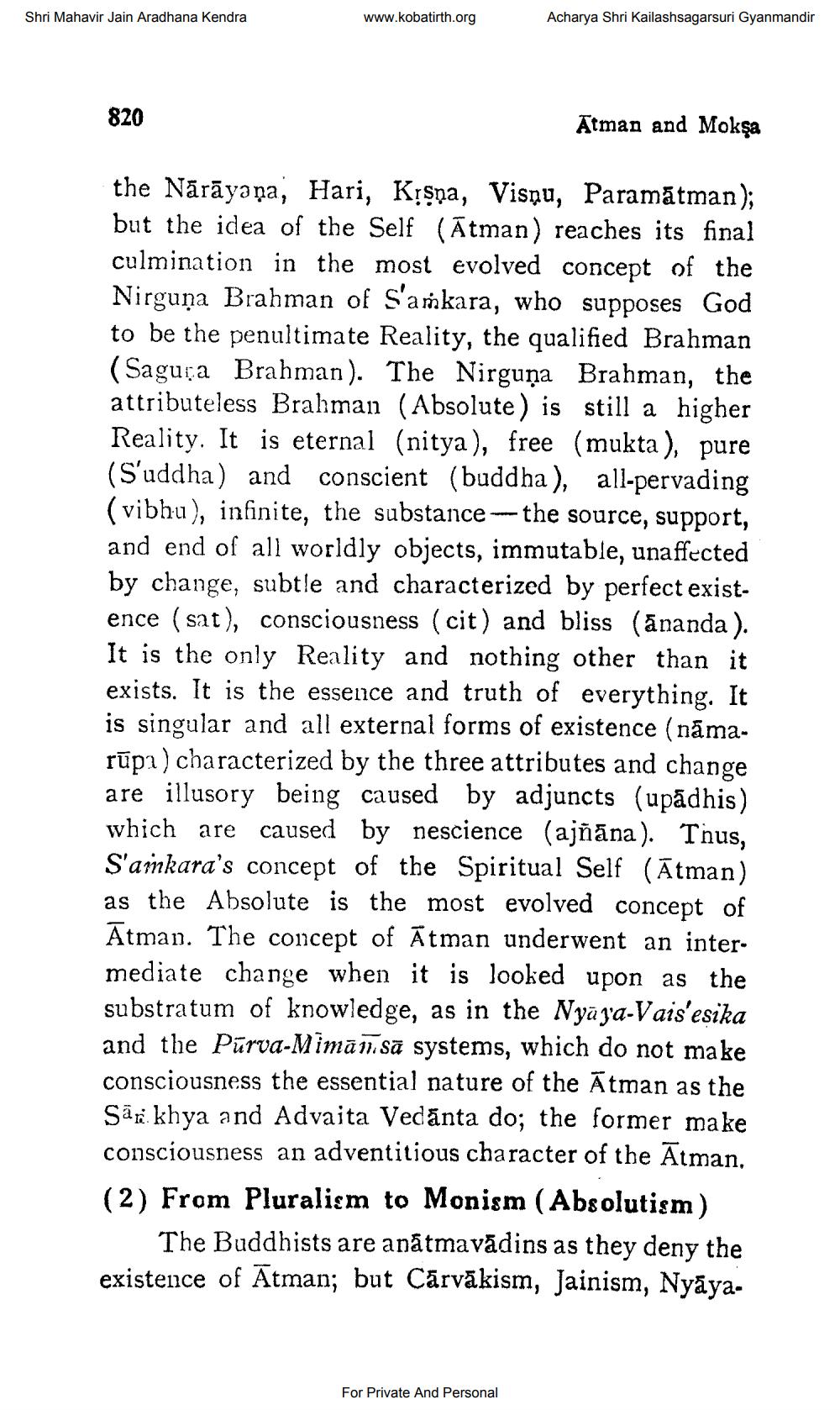________________
Shri Mahavir Jain Aradhana Kendra
www.kobatirth.org
Acharya Shri Kailashsagarsuri Gyanmandir
820
Atman and Moka
the Nārāyaṇa, Hari, Kịşņa, Visņu, Paramātman); but the idea of the Self (Ātman) reaches its final culmination in the most evolved concept of the Nirguna Brahman of s'ańkara, who supposes God to be the penultimate Reality, the qualified Brahman (Saguza Brahman). The Nirguna Brahman, the attributeless Brahman (Absolute) is still a higher Reality. It is eternal (nitya), free (mukta), pure (S'uddha) and conscient (buddha), all-pervading (vibhu), infinite, the substance -the source, support, and end of all worldly objects, immutable, unaffected by change, subtle and characterized by perfect existence (sat), consciousness (cit) and bliss (ānanda ). It is the only Reality and nothing other than it exists. It is the essence and truth of everything. It is singular and all external forms of existence (nāmarūpi) characterized by the three attributes and change are illusory being caused by adjuncts (upādhis) which are caused by nescience (ajñāna). Thus, S'ainkara's concept of the Spiritual Self (Ātman) as the Absolute is the most evolved concept of Ātman. The concept of Ātman underwent an intermediate change when it is looked upon as the substratum of knowledge, as in the Nyaga-Vais'esika and the Pūrva-Mimās.sā systems, which do not make consciousness the essential nature of the Ātman as the Sāxi khya and Advaita Vedānta do; the former make consciousness an adventitious character of the Ātman, (2) From Pluralism to Monism (Absolutism)
The Buddhists are anatmavādins as they deny the existence of Ātman; but Cārvākism, Jainism, Nyāya.
For Private And Personal




